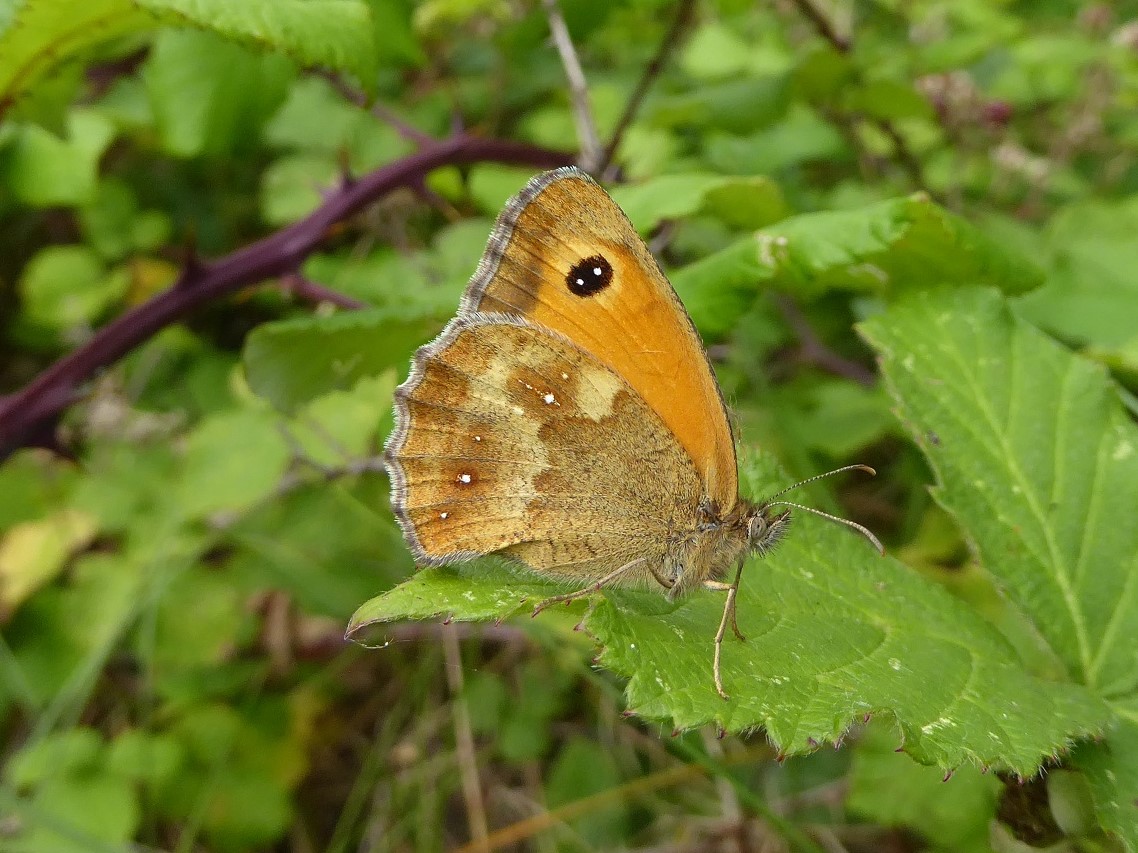During the glorious July of 2006, on our way to a family holiday in England, we stopped off at The Raven, in County Wexford. We were going to catch the ferry to Wales but had a day to spare so we headed to the beach. With a wife and three young children safely stowed on the lovely sandy shore, I slipped through the dunes into Ravenwood, a nature reserve and Special Area of Conservation which runs parallel to the dunes for around 8 km.
I was in my natural habitat now, with butterflies everywhere. The brightly-lit open wood with lovely, low-growing flowering bramble attracted many butterflies, especially our most striking Satyrid, the Hedge Brown, known to many as the Gatekeeper. This quiet but striking little butterfly is about the same size as the Ringlet. It is richly orange on its upper sides and basks to show off its warm colour, affording good but often brief views of its attractive wings. Its underside looks similar to that of the Meadow Brown. It is a restless butterfly, rarely perching for long. The adult is very dependent on sunshine for activity, settling very swiftly when direct sunshine is interrupted.
As far back as the records for the species go, it has, it appears, always been restricted to the south and south-east. It is currently known from four counties: Wexford, Waterford, Cork and Kerry. In these counties, it is usually found in warm areas near the coast. The mild springs seem to be important for the larva. The increasing temperatures over the last few decades would seem to favour the northwards expansion of the butterfly but it has not expanded its range in Ireland. By contrast, its range in Britain has expanded northwards since the 1970s, during the 1980s and 1990s but since then it has declined in abundance there. Indeed in Britain, it is faring particularly badly, with a statistically significant 10 year and long-term abundance declines of 44% and 41% respectively. Despite this serious decline in numbers there, it remains a widespread butterfly in England and Wales. In Ireland, it remains highly restricted in its range and there are signs that this butterfly is suffering a serious decline in both its abundance and range here.
Let me take you back to July 2006. Rambling along the brightly-lit woodland paths, Hedge Browns flitted from bloom to bloom, their orange colouring a sweet companion to the faintly frothy, delicate pink of the bramble petals. There were dozens of this butterfly and all seemed right with it then. Further north, at Old Bawn, south of Cahore, the species was also abundant, bobbing in the open scrubby, brassy dunes, mainly along the tracks.
That was then. In my recent visits to Cahore, I failed to find any, although the weather was not particularly good when I searched for it. More alarming, however, is the status of the butterfly in The Raven. In recent years I struggled to see it. In July 2017 I saw just five despite a lengthy search. Mary Foley of the Wexford Naturalists’ Field Club has checked the records from the reserve and these make for grim reading. Three were seen on the Irish Butterfly Monitoring Scheme transect on 16th July 2019 and one on 26th and one on 31st. In 2018 only two were seen – one on 26th July and one on 8th August. Mary had a look back at some old records and from 2007-2010 the average on the transect was 115 but had dropped to 49 for 2011-2014. The flight times recorded for these years went from early-mid July to last week of August. Mary reports that no one has reported the butterfly from Cahore. Furthermore, the butterfly has not been seen in Ballyteigue, County Wexford, another site.
We could now be looking at the extinction of the Hedge Brown in County Wexford.


